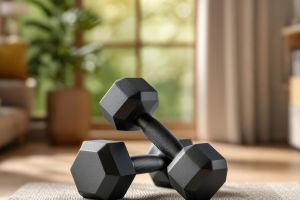Kegel exercises are gaining popularity for their positive effects on physical health, especially in supporting internal core stability. These simple muscle training routines can significantly improve quality of life.
This article offers Lykkers a clear and practical overview of what Kegel exercises are, how to perform them, what benefits they bring, and which mistakes to avoid along the way.
What Are Kegel Exercises?
Defined by Muscle Control
Kegel exercises involve the voluntary contraction and release of specific muscles located at the base of the pelvis. These muscles, like those in the arms or legs, can be strengthened with consistent training.
Named After the Doctor Who Introduced Them
They were first described by Dr. Arnold Kegel, who recognized the importance of these muscle groups in daily life and health management.
Simple Yet Structured
A typical routine includes holding a contraction for 5–10 seconds, followed by an equal or slightly longer rest. Beginners often start with 10 repetitions per set, repeating the set up to three times.
Why They’re Useful?
Support for Pelvic Stability
These exercises are often recommended for individuals experiencing internal pressure or discomfort in the lower abdomen. Strengthening the targeted muscles helps maintain stability and reduce unwanted leakage of fluids or gases.
Improved Muscle Tone and Control
Regular practice can improve voluntary control of pelvic muscles, enhancing everyday movement and core function.
Not Always Recommended in Painful Conditions
If discomfort or pain is already present in the lower torso, it's essential to consult a qualified health provider before starting any routine, as improper use may intensify symptoms.
How to Do Kegel Exercises?
Starting Position
Begin by lying on the back with knees bent. This position helps isolate the pelvic muscles without engaging others unnecessarily.
Mindful Muscle Activation
Imagine holding in emiction or preventing gas release—not actually doing it. This mental visualization helps trigger the correct muscles without straining the body.
Gradual Progression
Once basic control is achieved lying down, advance to sitting, then standing. Eventually, the movements can be integrated into dynamic tasks such as standing up or climbing stairs.
Start Small, Grow Steadily
Begin with short contractions and longer rest periods. Increase the duration and repetitions only as strength and awareness improve.
Introducing Training Tools
Some health professionals suggest using weighted devices to increase resistance over time. However, these should only be introduced after foundational strength is established. Devices with adjustable weights are preferable, allowing for gradual progression similar to strength training.
Common Mistakes to Avoid
Incorrect Muscle Engagement
A frequent error is unintentionally contracting the inner thighs or gluteal muscles. These should remain relaxed during the exercise.
Breathing Disruptions
Holding the breath or breathing forcefully reduces the effectiveness of the movement. Normal, relaxed breathing is key.
Using Abdominal Pressure
Forcing the lower abdomen outward or bracing the belly can create pressure that works against the goal. This is sometimes called an “inversion of control.”
Reversing the Action
Some people mistakenly relax when they should be contracting and vice versa. This paradoxical pattern limits any potential benefit.
Why It's Challenging?
Hidden and Often Overlooked Muscles
Pelvic floor muscles are internal and small. Many people are unaware of their existence, making it difficult to locate and engage them properly.
Low Awareness and Coordination
Even physically active individuals may struggle with isolating these muscles. According to physical therapist Kari Bø, a leader in pelvic floor research, most beginners benefit from professional guidance to learn correct technique and build muscle awareness (Bø, 2013).
Conclusion: Small Exercises, Big Results
Kegel exercises are a simple yet effective way to strengthen a vital part of the body often ignored in regular training. When done correctly, they help improve comfort, stability, and control. However, like any training, they require patience, consistency, and proper technique.
For Lykkers interested in building inner strength in a safe and structured way, Kegels offer an accessible and powerful starting point. Always seek expert advice before beginning a new regimen to ensure safe and beneficial outcomes.


